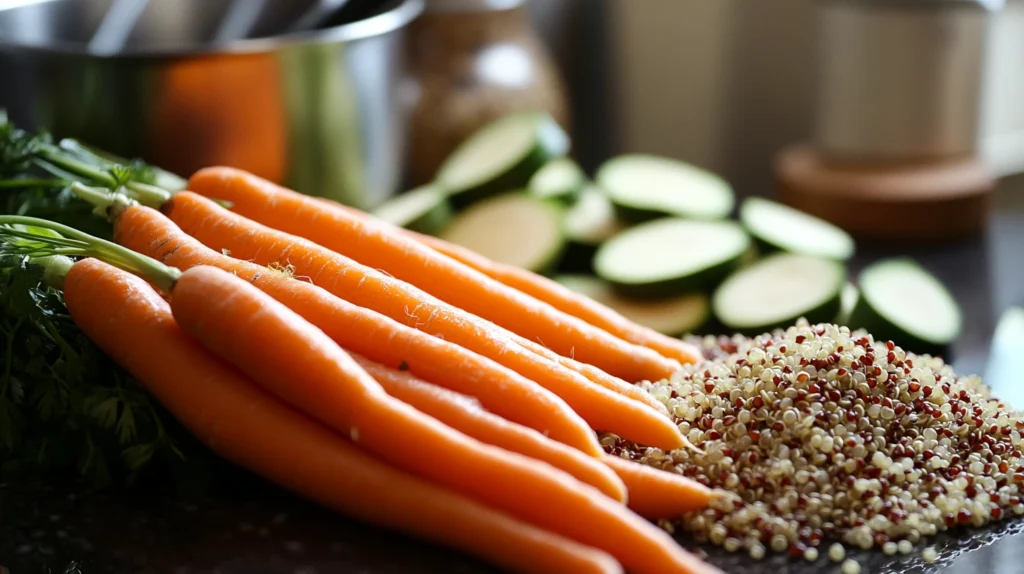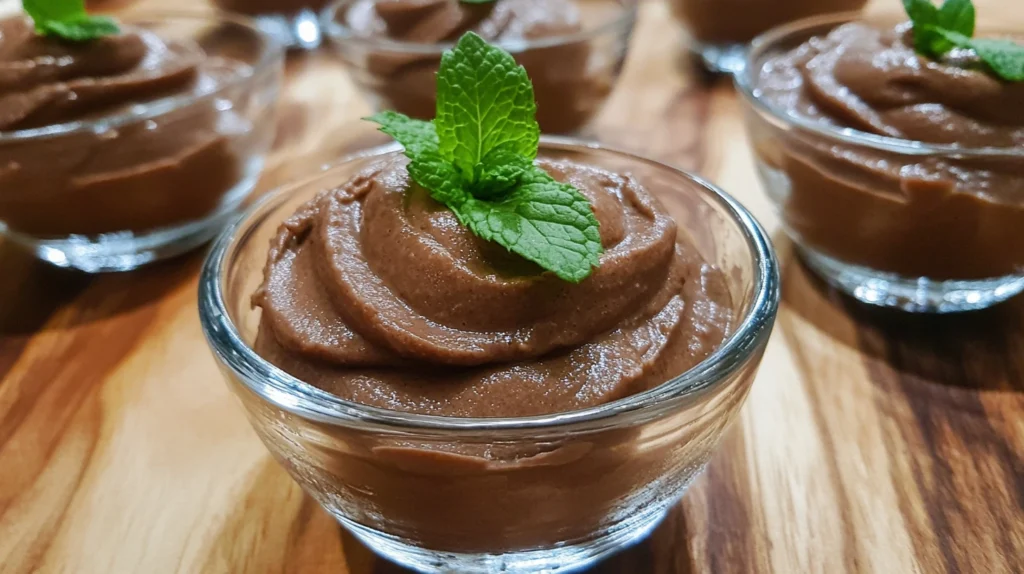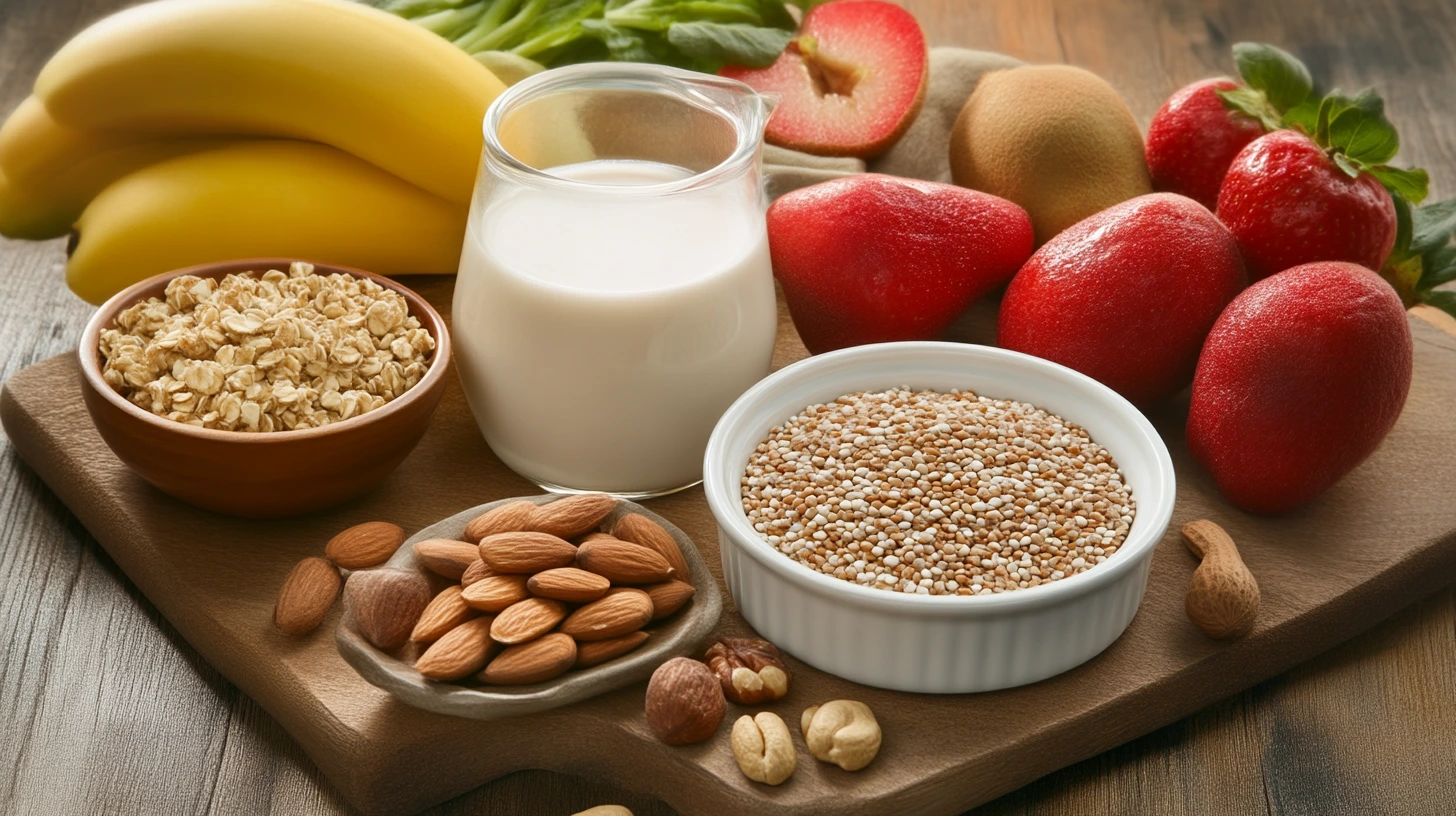Dietary restrictions have become increasingly common, with gluten and lactose intolerance affecting millions of individuals worldwide. A gluten and lactose-free diet eliminates two major allergens: gluten, a protein found in wheat, barley, and rye, and lactose, a sugar present in dairy products. Whether driven by medical necessity or personal choice, these diets promote better digestion, reduced inflammation, and improved overall well-being.
Navigating the world of gluten and lactose-free eating can seem overwhelming at first, but it opens the door to an array of delicious, wholesome foods. For more inspiration, explore these 25 tasty gluten and lactose-free recipes. This guide explores what you can eat on such a diet, practical meal-planning tips, and satisfying recipes that cater to your dietary needs. We’ll also dispel common myths and provide actionable advice to ensure your meals remain balanced and nutritious.
Understanding Gluten and Lactose
To fully embrace a gluten and lactose-free diet, it’s essential to understand what these components are and why they pose challenges for certain individuals.
What is Gluten in a Gluten and Lactose-Free Diet?
Gluten is a protein found in grains such as wheat, barley, and rye. Its elasticity and chewy texture make it a key ingredient in bread, pasta, and many baked goods. However, for those with gluten sensitivity, celiac disease, or wheat allergies, consuming gluten can lead to adverse reactions. Symptoms range from digestive distress, like bloating and diarrhea, to more severe issues such as skin rashes and joint pain.
Sources of gluten include:
- Bread, bagels, and rolls.
- Pasta and noodles made from wheat flour.
- Baked goods like cakes, cookies, and muffins.
- Beer and malt-based beverages.
- Certain processed foods, including soups and sauces, where gluten is used as a thickener.
Gluten-free alternatives, such as rice, quinoa, and certified gluten-free products, offer safe substitutes.
What is Lactose and How Does it Fit in a Gluten and Lactose-Free Diet?
Lactose is a natural sugar found in dairy products like milk, cheese, and yogurt. Lactose intolerance occurs when the body lacks sufficient lactase, the enzyme needed to digest lactose. Symptoms may include abdominal pain, gas, bloating, and diarrhea after consuming dairy.
Common sources of lactose include:
- Cow’s milk, goat’s milk, and cream.
- Cheese varieties like cheddar, mozzarella, and ricotta.
- Yogurt, ice cream, and custards.
- Butter and other dairy-based spreads.
Many lactose-free products, such as almond milk, coconut yogurt, and plant-based cheeses, provide excellent alternatives without compromising flavor or texture.
Benefits of Gluten and Lactose-Free Diets
Eliminating gluten and lactose from your diet offers significant advantages, particularly for those with sensitivities or intolerances. However, it also appeals to individuals seeking improved health and well-being.
Health Benefits
- Improved Digestion: Removing gluten and lactose reduces digestive symptoms like bloating, gas, and diarrhea for sensitive individuals.
- Reduced Inflammation: For some, gluten and lactose contribute to systemic inflammation, which can exacerbate autoimmune conditions or chronic pain.
- Increased Energy Levels: Many report feeling more energetic after eliminating these allergens, possibly due to reduced gut irritation.
- Weight Management: A gluten and lactose-free diet encourages whole, unprocessed foods, which may support healthier weight management.
- Skin Improvements: Some experience clearer skin as their bodies no longer react to allergenic foods.
Common Misconceptions
Despite its benefits, gluten and lactose-free diets often face criticism rooted in misinformation. Here are some myths debunked:
- “It’s a fad diet.” While some follow this lifestyle by choice, individuals with celiac disease, gluten sensitivity, or lactose intolerance require it for health reasons.
- “You can’t enjoy food anymore.” There are countless delicious, naturally gluten and lactose-free recipes and substitutes available.
- “It’s inherently healthier.” While beneficial for certain individuals, the diet isn’t automatically healthier unless well-balanced. Over-reliance on processed replacements can lead to nutrient gaps.
Essential Foods for a Gluten and Lactose-Free Diet
Adopting a gluten and lactose-free diet involves focusing on naturally allergen-free foods and carefully selecting substitutes. The key is to embrace whole, minimally processed foods while avoiding hidden sources of gluten and lactose.
Naturally Gluten-Free and Dairy-Free Foods for Your Diet
The foundation of a healthy gluten and lactose-free diet includes fresh, natural foods that are free of allergens by nature. Some top choices are:

- Fruits and Vegetables: All fresh produce is naturally free of gluten and lactose. Options like leafy greens, berries, bananas, apples, carrots, and zucchini provide essential vitamins and antioxidants.
- Proteins: Meat, poultry, fish, and eggs are all gluten and lactose-free in their natural state. Opt for unseasoned cuts to avoid potential cross-contamination.
- Legumes and Pulses: Lentils, chickpeas, black beans, and peas offer plant-based protein and fiber.
- Gluten-Free Grains: Rice, quinoa, millet, buckwheat, and amaranth are excellent substitutes for traditional wheat products.
- Nuts and Seeds: Almonds, walnuts, sunflower seeds, and chia seeds make for great snacks and recipe additions.
Processed Foods to Avoid
Many processed foods contain hidden sources of gluten and lactose. These include:
- Breaded and battered items (e.g., chicken nuggets, fried fish).
- Pre-packaged sauces and gravies, which may use wheat flour or cream.
- Processed deli meats and sausages, where fillers might contain gluten or lactose.
- Certain snack foods like flavored chips, crackers, and cereals.
Certified Gluten-Free and Dairy-Free Products
For convenience, many brands now offer gluten and lactose-free alternatives. Look for certified labels to ensure the products meet rigorous standards. Popular options include:
- Gluten-free bread, pasta, and pizza bases.
- Plant-based milks such as almond, oat, or coconut milk.
- Dairy-free cheeses and yogurts made from cashews or soy.
- Gluten-free snacks like rice crackers, popcorn, or baked goods.
Hidden Sources to Watch For
Some products might surprise you as hidden sources of gluten or lactose:
- Soy sauce: Traditional soy sauce contains wheat; opt for tamari instead.
- Salad dressings: Cream-based dressings often contain dairy, while others might include gluten as a stabilizer.
- Candy and chocolates: Many include milk or wheat-based additives.
Careful label reading and reliance on whole foods can help you avoid these pitfalls.
Meal Planning and Preparation
Creating satisfying, balanced meals on a gluten and lactose-free diet requires thoughtful planning and the use of creative substitutes.
Building Balanced Meals
To ensure optimal nutrition, focus on meals that combine protein, healthy fats, and gluten-free carbohydrates. Examples include:
- Breakfast: A smoothie bowl with almond milk, fresh fruit, and chia seeds.
- Lunch: A quinoa salad with grilled chicken, roasted vegetables, and olive oil dressing.
- Dinner: Grilled salmon with steamed broccoli and mashed sweet potatoes.
Substitutes for Gluten and Dairy Ingredients
Transitioning to this diet doesn’t mean giving up your favorite foods. Many alternatives allow you to recreate traditional dishes:
- Bread: Use gluten-free flour blends made from rice, almond, or chickpea flour.
- Milk: Replace cow’s milk with almond, oat, or coconut milk.
- Cheese: Try dairy-free cheeses made from cashews, almonds, or soy.
- Butter: Opt for vegan butter or coconut oil in cooking and baking.
Reading Labels
Carefully reading ingredient lists is crucial to avoiding hidden gluten and lactose.
- Look for terms like “modified food starch” (which may contain wheat) or “whey” (a dairy derivative).
- Certified gluten-free and dairy-free labels simplify the process.
- Check for disclaimers about potential cross-contamination with wheat or milk during processing.
Dining Out Successfully on a Gluten and Lactose-Free Diet
Eating out while following a gluten and lactose-free diet can be challenging, but with preparation and communication, you can enjoy safe and delicious meals.

Choosing Safe Restaurants
Select restaurants that are known for accommodating dietary restrictions. Here’s how to identify suitable options:
- Look for eateries with dedicated gluten-free or allergen-friendly menus.
- Research online reviews or ask friends for recommendations.
- Chain restaurants often have allergen guides available online, so check these before heading out.
Ethnic cuisines such as Thai, Indian, or Mexican often feature naturally gluten and dairy-free dishes. However, always verify the ingredients to avoid hidden allergens.
Communicating Your Needs
Clearly explaining your dietary requirements is essential. Follow these tips:
- Be specific: Use terms like “no wheat, barley, or rye” and “no milk, cream, or cheese” to avoid confusion.
- Ask questions: Inquire about preparation methods to ensure no cross-contamination occurs.
- Request modifications: Most chefs are happy to adapt dishes, such as using oil instead of butter or omitting a sauce.
Bring a small card listing your restrictions if you’re concerned about being understood.
Best Practices for Cross-Contamination
Even if a dish seems safe, cross-contamination in the kitchen can lead to exposure. Minimize risks by:
- Requesting food cooked in a clean pan or on a separate grill.
- Avoiding fried items that share oil with breaded foods.
- Asking for fresh utensils and plates to serve your meal.
Recipes for Gluten and Lactose-Free Diets
Cooking at home is one of the best ways to ensure your meals are safe, nutritious, and delicious. Here are some ideas to get started:
Breakfast Recipes
- Banana-Oat Pancakes: Combine gluten-free oats, mashed bananas, almond milk, and eggs for a hearty start to the day.
- Smoothie Bowls: Blend frozen fruits with coconut milk, then top with granola, nuts, and seeds.
- Scrambled Eggs with Vegetables: Add spinach, tomatoes, and onions for a protein-packed breakfast.
Lunch and Dinner Recipes
- Quinoa Salad: Mix cooked quinoa with chopped vegetables, beans, and a lemon-tahini dressing.
- Zucchini Noodles with Pesto: Replace pasta with spiralized zucchini and toss with a dairy-free basil pesto.
- Baked Salmon with Roasted Veggies: Season salmon with olive oil and herbs, and bake alongside seasonal vegetables.
Desserts and Snacks
- Coconut Rice Pudding: Cook rice in coconut milk and sweeten with maple syrup and cinnamon.
- Energy Balls: Combine dates, nuts, and cocoa powder in a food processor for a quick snack.
- Dairy-Free Chocolate Mousse: Blend avocados, cocoa powder, and a natural sweetener for a rich treat.
FAQs
Can you eat rice on a gluten-free diet?
Yes, rice is naturally gluten-free and a versatile staple for meals. However, be cautious with flavored or pre-packaged rice dishes, which might contain gluten-based additives.
What dairy-free milk tastes best?
The best choice depends on personal preference. Almond milk is light and nutty, oat milk is creamy and mild, while coconut milk has a slightly tropical flavor.
Can you eat eggs on a gluten and lactose-free diet?
Yes, eggs are both gluten and lactose-free, making them an excellent source of protein for this diet.
How to bake without gluten and dairy?
Use gluten-free flour blends and substitutes like almond or coconut milk. Incorporate flaxseed or chia seeds as egg replacements for binding.
Are there risks to this diet?
The main risks include potential nutrient deficiencies, such as calcium or vitamin D, if dairy substitutes are not fortified. Ensure a well-rounded diet to meet all nutritional needs.
Can children follow this diet?
Yes, but it’s essential to ensure they receive adequate nutrients. Consult a pediatrician or dietitian for tailored guidance.
Conclusion
Following a gluten and lactose-free diet may initially feel restrictive, but it’s an opportunity to explore new foods and healthier options (What Snacks Are Gluten and Lactose Free?). By focusing on whole, natural ingredients and making informed choices, you can enjoy a varied and delicious diet that supports your health and well-being. Whether dining out, cooking at home, or planning meals, a bit of preparation ensures your lifestyle remains both enjoyable and sustainable.


1 thought on “Gluten and Lactose-Free Diet: What Can You Eat?”